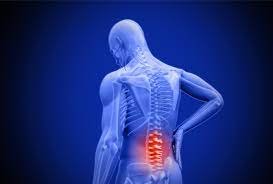If you’re suffering from chronic back pain, lying down might seem like the only way to get relief. But here’s the truth: extended bed rest can actually make your condition worse. According to leading medical organizations like the Mayo Clinic and the National Institutes of Health (NIH), staying active is one of the most effective ways to manage chronic back pain.
This article outlines exactly why lying down isn’t the solution and what proven, science-backed actions you can take instead.
Why Lying Down Isn’t the Answer for Chronic Back Pain
It’s natural to think rest equals recovery. But when it comes to chronic back pain (defined as pain lasting more than 12 weeks), too much rest leads to muscle weakening, joint stiffness, and worsened symptoms.
Medical Facts:
- Muscle Loss: Inactivity weakens the core and spinal muscles responsible for support.
- Stiff Joints: Lack of movement reduces mobility and increases stiffness.
- Delayed Healing: Rest limits blood circulation and slows the healing process.
- Pain Sensitization: The nervous system can become more sensitive to pain with disuse and inactivity.
Clinical Insight: The American College of Physicians recommends exercise—not bed rest—as a first-line treatment for most types of chronic back pain.
What You Should Do Instead: Doctor-Recommended Approaches
1. Start Moving—Gently But Consistently
Light to moderate physical activity strengthens muscles, boosts circulation, and supports spine health.
Best options include:
- Walking (daily, even for 10–15 minutes)
- Swimming or water therapy (low impact)
- Yoga or Stretching (gentle, restorative poses)
- Stationary cycling
Tip: Avoid high-impact or twisting movements unless cleared by a physiotherapist.
2. Strengthen Your Core
The abdominal and lower back muscles act as natural support for your spine. Weak core muscles contribute significantly to ongoing pain.
Effective exercises:
- Pelvic tilts
- Bird-dog
- Glute bridges
- Modified planks
These can be done at home with zero equipment and are often recommended by physiotherapists.
3. Fix Your Sitting and Standing Posture
Poor posture is a major, overlooked cause of chronic back pain.
Posture checklist:
- Sit with feet flat and back supported
- Use lumbar rolls or pillows to support the lower spine
- Avoid slouching or leaning forward
- Keep computer screens at eye level
Pro tip: If you sit for long hours, get up every 30–45 minutes to stretch or walk.
4. Try Heat and Cold Therapy—At the Right Time
- Cold packs: Ideal in the first 24–48 hours of a pain flare-up (to reduce inflammation).
- Heating pads: Better for chronic pain (to ease muscle tension and improve blood flow).
Use for 15–20 minutes per session. Avoid sleeping with heating pads to prevent burns.
5. Mind-Body Techniques That Really Work
Pain perception is not only physical—your brain plays a critical role. Techniques that help reduce the stress response include:
- Mindfulness meditation
- Cognitive behavioral therapy (CBT)
- Progressive muscle relaxation
- Biofeedback training
According to a 2022 study published in JAMA Internal Medicine, mindfulness-based stress reduction showed measurable improvements in chronic low back pain.
6. Consult with a Spine or Pain Specialist
If your pain persists despite self-care, a multidisciplinary medical approach may be required.
You may need:
- A physical therapist for tailored movement programs
- A pain management physician for medications, injections, or nerve blocks
- Imaging (MRI/CT scans) if a structural issue (e.g., herniated disc, spinal stenosis) is suspected
Avoid self-diagnosing or overusing over-the-counter medications without guidance.
Ergonomic Changes That Help
Whether you work from home or in an office, poor ergonomics can perpetuate pain. Make simple adjustments:
- Use a chair with lumbar support
- Switch to a standing desk periodically
- Place monitors at eye level
- Use footrests if needed
- Sleep on a medium-firm mattress with proper alignment
When Is Rest Acceptable?
Rest may be beneficial only for the first 1–2 days of an acute flare-up. But beyond that, inactivity leads to more problems than it solves. The goal is to keep your body moving—safely and mindfully.
Conclusion: Movement Is Medicine
Chronic back pain is complex, but lying down isn’t the solution. Instead, move more—strategically. The combination of gentle physical activity, posture correction, strength training, and psychological resilience can significantly reduce symptoms over time.
Before starting any exercise or therapy, consult a licensed health professional—especially if your pain is severe or worsening.


